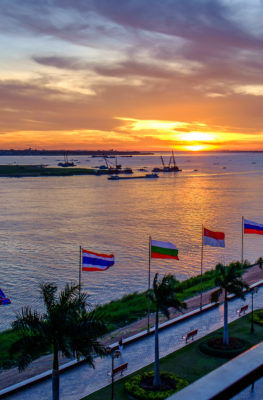Published on December 8, 2014
Laos' culture manifests in a variety of ways, most compellingly through temple ruins, a sedate heritage town and a mysterious plain of jars.
1.1. Plain of Jars, Xiengkhouang Province

The thousands of jars littering three sites in Xieng Khouang Province remain a mystery, but many tourists seem determined to crack the case. Thousands of visitors brave the considerable distance from Vang Vieng to the three Plains of Jars sites, exploring the trails around the mysterious stone receptacles by foot or by motorcycle.
The jars were made for a still unknown purpose between 500BC to 300AD; all the jars were carved from solid rock, and the lip around the top suggests that they had lids once upon a time. Travelers to the Plain of Jars must take care to avoid spots that have not yet been cleared of unexploded ordnance (UXO) left over from the Vietnam War.
1.2. Luang Prabang Heritage Town

Luang Prabang was Laos' former capital, and it still retains an ancient and laid-back charm thanks to the European architecture standing side-by-side with ancient-looking temples and traditional houses.
The temples in Luang Prabang number over 30, best exemplified by Wat Xieng Thong. This temple was built in the classic Luang Prabang style, and retains an abundance of traditional art inside and outside – including carvings of figures from Lao myth and a magnificent tree-shaped mosaic worked into the exterior wall.
Luang Prabang's other temples include Phou Si with its gold-covered stupa; Wat Visoun with its peculiar domed roof; and the "monastery of the opened heart" Wat Aham, where Theravada Buddhism was often practiced in conjunction with ancient animist worship.
1.3. Wat Phou Temple, Champasack

This Hindu temple complex was built by the Khmer Empire, which ruled this part of Laos between the 10th and the 14th centuries. The sprawling temple complex is oriented from west to east, stretching 1.4km from a spring to the Mekong River where two ancient cities' ruins can be found today. The oldest part of Wat Phou dates back as far as the 5th century AD, with most of the surrounding structures having been built in the 11th to the 13th century.
Built as a Hindu temple, Wat Phou survived the arrival of Buddhism in Angkor and absorbed its practice: an altar at Wat Phou now contains a series of Buddha images for the veneration of visiting devotees. An annual festival takes place at Wat Phou on the third lunar month. vatphou-champassak.com






